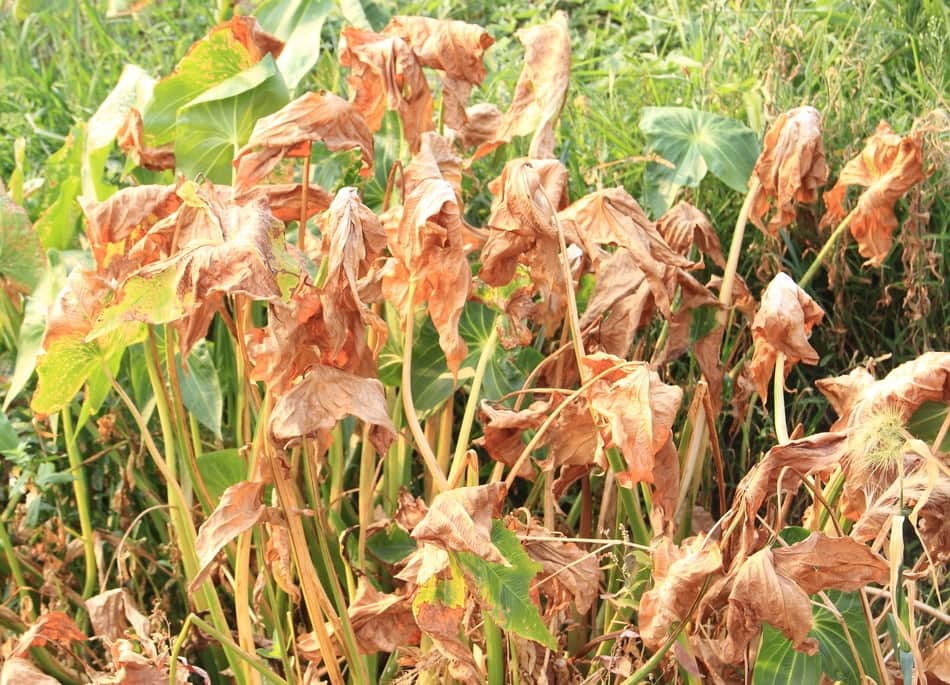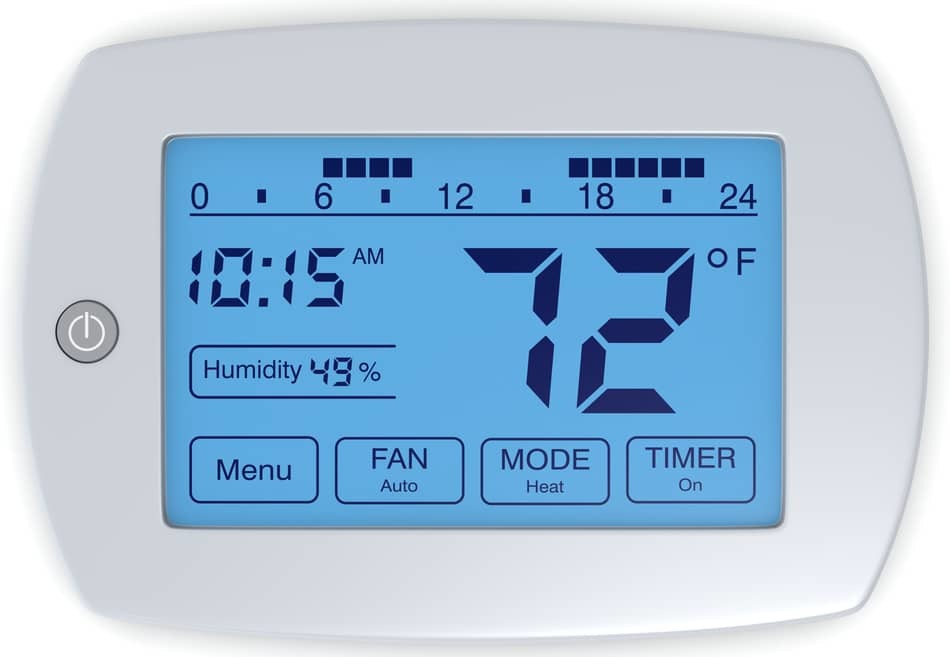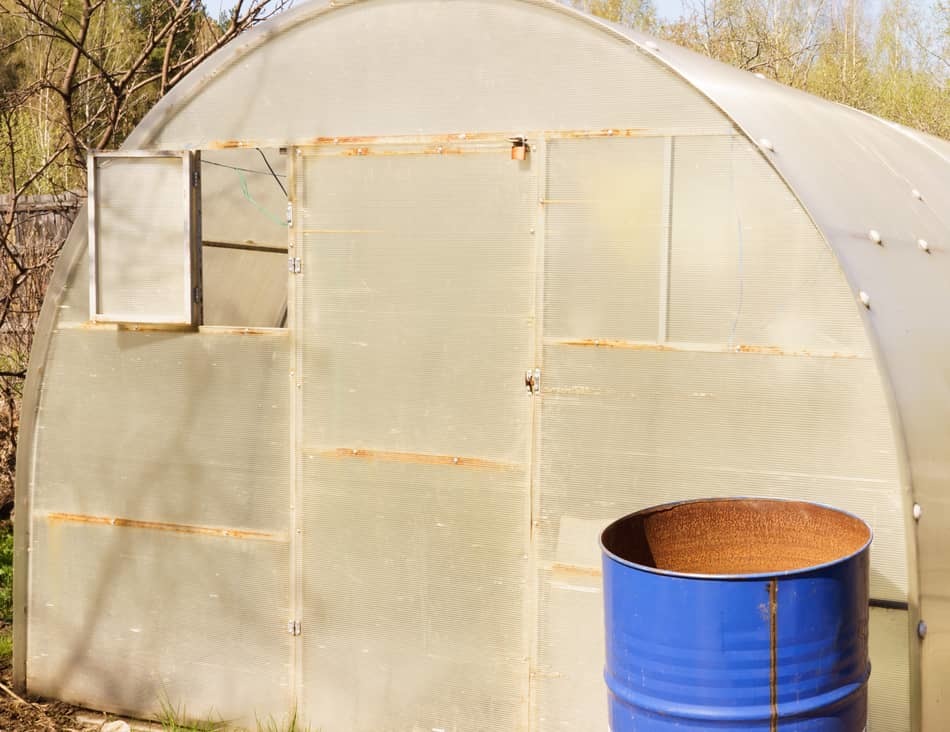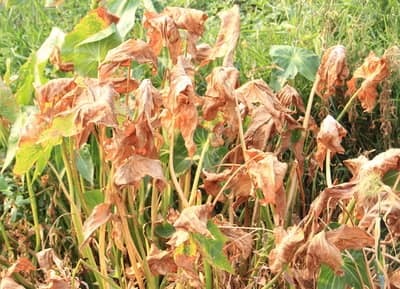Too much heat–especially during the height of summer–is one of the most common problems for greenhouse growers. But, depending on what plants you’re growing, knowing how hot is too hot isn’t always easy.
So, what temperature is too hot for a greenhouse? Anything above 90 degrees Fahrenheit is absolutely too hot for a greenhouse. Even the toughest vegetables, like tomatoes, won’t do well above 90 degrees Fahrenheit. The ideal temperature for most plants to flourish is somewhere between 80 and 85 degrees Fahrenheit.
However, this ideal temperature varies from plant to plant. It is really important to understand the ideal temperature range for your plants because a greenhouse that is too hot will damage your plants. It could also shorten your growing seasons and decrease your crop production!
But fret not!
If you know the ideal range it is possible to keep your greenhouse from becoming too hot, and keep enjoying all the benefits of having a greenhouse!

How does the type of plant affect what temperature is too hot?
Since the ideal temperature of a greenhouse varies from plant to plant, it’s important to know your plants!
Specifically, it’s important to know what temperature is best for each type (species) of plant.
This information is typically found on the seed pack, so pay attention next time you purchase something you plan to go in your greenhouse.
It’s especially important to know if your plants are heat resistant.
Heat-tolerant plants
Some plants can still thrive up to 90 degrees Fahrenheit. The plants that do well in heat typically thrive between 80-90 degrees Fahrenheit.
These plants are often known as summer crops, since they can withstand tough summers and still be productive. These plants include:
|
Heat-tolerant plants |
|---|
|
Tomatoes Okra Eggplant Sweet potatoes Cucumbers Cabbage Beans Arugula Watermelon Chili peppers |
However, even for the plants listed above, a greenhouse that’s 90 degrees Fahrenheit is still too hot.
That’s because photosynthesis decreases when temperatures get too hot.
You need to make sure you know the temperature of your greenhouse so it doesn’t get above ~90 degrees Fahrenheit.
However, the plants listed above are the toughest of the tough.
So you don’t need to worry too much.
These plants would be especially good to plant if you’re new to planting in a greenhouse, are nervous about your greenhouse getting too hot, or if you had a problem with your plants in the past.
Heat-sensitive plants
What you really need to be careful about, however, are the plants that are sensitive to heat.
These plants will thrive at around 75-85 degrees Fahrenheit. These include:
|
Heat-sensitive plants |
|---|
|
Arugula (rocket) Beets Broccoli Brussels sprouts Collards Carrots Cauliflower Kale Lettuce Onions Pak choi (Bok choy) Peas |
These plants are not the resident tough guys I listed previously.
Heat-sensitive plant varieties require you to lower the temperature in your greenhouse if you want to have a successful harvest. For heat sensitive pants, 85 degrees Fahrenheit is too hot for them.
These plants can be tough to grow in summer, since that’s the season most gardeners have problems with their greenhouse getting too hot.
So if you really have a hankering for beets and decide to grow them yourself, make sure you remember that 85 degrees Fahrenheit is too hot.
How does your location affect what temperature is too hot?
It almost goes without saying, but make sure you keep in mind what your climate is like.
For example, people who live in extremely hot climates need to be extra mindful of how hot their greenhouses get.
While on the other hand, people with greenhouses in Alaska will have the opposite problem–keeping their greenhouse warm enough!
However, there’s more to consider than just how hot or cold your climate is.
People living in especially humid climates need to be more mindful of the temperature of their greenhouse.
The combination of hot temperatures and high humidity often cause problems for plants, such as fungal infections and mildew.
So, take head greenhouse growers! If you live in a hot and humid climate, aim for the lower end of the ideal temperature ranges for your specific plants.
Places that have a really difficult time keeping their greenhouses too hot are the American South and Southwest, Mexico, India, the Philippines, etc.
For people in these climates, don’t worry!
There are methods to keeping your greenhouse cool, and we’ll get into those later in this article.

How to check the temperature of your greenhouse
Long story short, don’t get a mercury thermometer. There are just too many downsides.
Mercury thermometers are not very accurate, and are exceptionally dangerous if broken.
So they’re really inadequate for checking the temperature of your greenhouse.
If you want a more accurate temperature reading, invest in a thermocouple.
A thermo-what?
Although you might not have heard of a thermocouple, they’re actually really cool (no pun intended).
A thermocouple is two different pieces of metal twisted together.
These twisted together pieces of metal create a voltage relative to their temperature difference.
The result?
It’s easy to measure temperature accurately–which gives you an accurate temperature reading of your greenhouse.
Which you’re going to need if you still have a hankering to grow beets.
But where to place your thermocouple to get the most accurate reading?
Your sensor needs to be shielded from the sun and lights.
If it’s not, the thermocouple will inaccurately depict too high of a temperature.
In order to work the thermocouple ideally should be placed where it along a constant air stream.
In order to accomplish these requirements, an easy solution is to make sure your thermocouple is in an aspirated box that’s reflective in color.
Another common mistake is placing the thermocouple too high.
Remember: heat rises. So, if you place the thermocouple above your highest canopy, it’ll read a few degrees warmer that what temperature your plants are actually experiencing.
So basically, the best placement for your thermocouple is at, or about, plant height.
Make sure you regularly check your thermocouple to make sure you know the temperature of your greenhouse–that way, you’ll know before it gets too hot.
It’s also good to make sure your thermocouple is still working properly and is still in a good position.
How to lower the temperature in your greenhouse
Now that you have an abundance of information on what temperature is too hot for a greenhouse, what do you do with that information?
You don’t need to give in to mother nature and accept a blistering hot greenhouse!
There are lots of ways to lower the temperature of your greenhouse so you can enjoy longer growing seasons and greater crop production!
You can lower your greenhouse temperature with the following methods & systems:
- Ventilation systems
- Fans
- Shade
- Watering
- Damping down
- Evaporative cooling & fan misters
- Undersoil fan
Ventilation systems
Ventilation systems are an easy way to keep your greenhouse cool, and most greenhouses are already equipped with them.
The basic principle of a ventilation system is providing airflow to cool down overheated plants.
Opening your greenhouse door, as well as opening up vents in your greenhouse roof and side walls, will provide proper airflow and will bring the temperature of your greenhouse down.
This is really cheap and is an easy way to lower the temperature in your greenhouse.
Fans
Fans operate on the same principle as ventilation systems: they create airflow to cool down your plants.
If opening up your greenhouse’s ventilation system just isn’t doing it, perhaps it’s time to invest in a fan.
There are popular fan systems that require no electricity, as well as direct-drive fan units that are powered by solar panels.
Shade
This one is pretty straight forward: shade creates cooler temperatures!
There are a multitude of ways to create shade in your greenhouse.
Growing plants with large leaves and tall canopies is a great way to create natural shade for the rest of the plants in your greenhouse.
Another option is using a shade cloth.
Shade cloths & nettings are available in all sorts of materials, but the good ones are made from aluminet, which doesn’t heat the inside of your greenhouse as the cloth get hot.
And, you’ll want to check out the full article on what percentage shade cloth to use.
Watering
While keeping your plants well watered doesn’t actually lower the temperature of your greenhouse, it’s the most important thing you can do to help your plants combat high temperature.
Plants keep themselves cooler by transpiration–basically they sweat.
Just like people, this loss of moisture cools the plant, but also requires plants to stay hydrated. If they aren’t able to sweat they won’t be able to naturally combat the heat and they’ll die.
Damping down
This is an extremely easy technique for lowering the temperature of your greenhouse.
All you have to do is use a hose to spray down the surfaces in your greenhouse–for example, the floor.
What happens is that water will evaporate and have a cooling effect on the rest of your greenhouse.
Again, super simple, but also really effective. And it has the added bonus of creating conditions less favorable for some pests.
Evaporative coolers and fog misters
Another common option to combat summer heat in a greenhouse is an electronic cooling system.
hese systems run on electricity and can get rather expensive.
Two common types sold are a pad-and-fan system (this is typically what’s referred to as an evaporative cooler or swamp cooler) and a fog system.
Another popular option for larger greenhouses is a mist system.
These of course are the most expensive options and really are only needed if all the others don’t do the trick.
Undersoil fan
This option is much less common, but actually super effective. It’s basically geothermal cooling for your greenhouse.
Essentially you can buy a fan system that goes underneath your soil that pushes hot air out of the greenhouse through pipes in the soil.
This, in combination of proper air flow through ventilation, will dramatically lower the temperature of your greenhouse.
The basic principle is that you transfer heat from the greenhouse to the ground beneath it; the ground/soil is much cooler (usually around 55 degrees Fahrenheit), so it’s effective at cooling the warm greenhouse air.
Got it? Now, keep those plants cool during the height of summer!

Related Questions
How do you cool down a greenhouse?
The 3 primary methods to cool down a greenhouse are: ventilation, shading, and evaporation.
Each method has several options. With ventilation, you can simply open a window or vent, or get fancier by using fans.
Shading can be done using shade netting, shade cloth, or shade paint. Evaporation can be done via damping down, an evaporative cooler, or fog misters.
How can I reduce the heat in my greenhouse?
The 6 most common ways to reduce heat in a greenhouse are: ventilation, fans, shade cloth, shade paint, evaporative cooling, and damping down.
Fog misters are a 7th option, and also use the cooling effect of evaporation.
How to regulate temperature in a greenhouse?
Regulating greenhouse temperature includes both heating (in winter) and cooling (in summer).
For cooling, ventilation, shading, & evaporation are used. For heating, insulation, weather stripping, thermal mass, and heaters are used. Automation can make greenhouse temperature control easy & hands-off.
What level of humidity is too much for a greenhouse?
Just like heat, you need to control the humidity of your greenhouse.
Unfortunately, there no real ideal range of humidity that’s right. Essentially the best humidity for your greenhouse is where there is no wet foliage. Wet foliage causes lots of problems like fungal infections and mildew.

